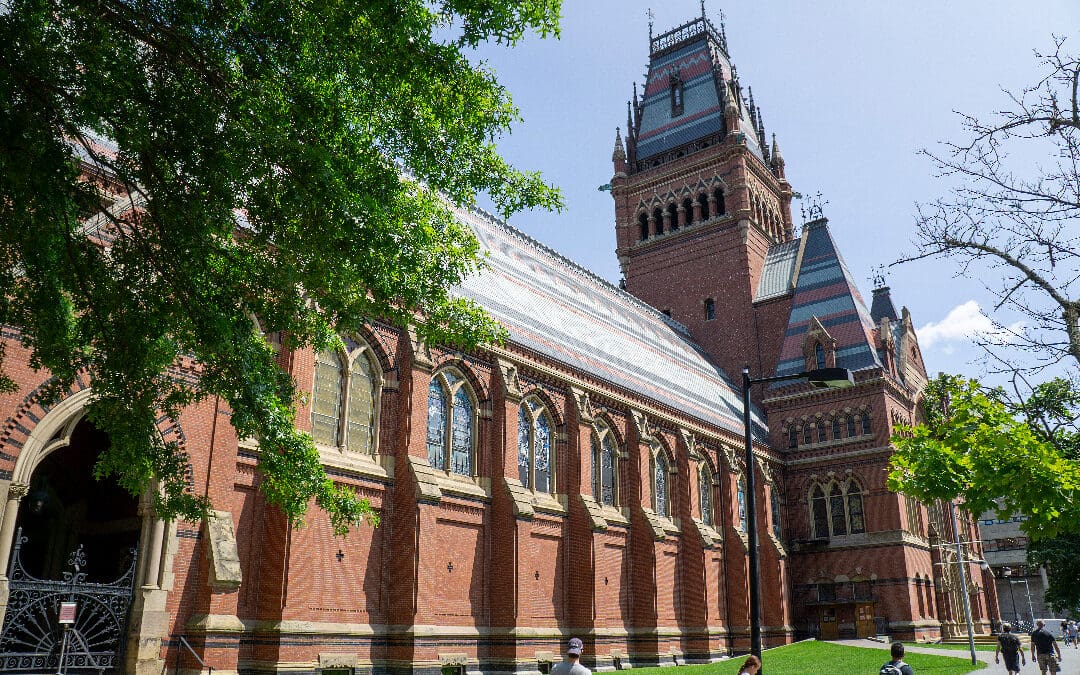
Interns and Residents Are Unionizing at a Rapid Clip
February 24, 2025
Winner Take All
February 24, 2025
Osborne is not a typical academic, and for reasons that have little to do with their appearance — gingham button-down, inked forearms, silver undercut. Osborne was a first-generation, low-income student at an elite private college and earned a doctoral degree from an even more elite private university. At a time when over 20 percent of tenure-track faculty have at least one parent with a PhD and academia is increasingly dominated by those from elite class backgrounds, Osborne is about as rare as a Donald Trump voter at a Chappell Roan concert.
“Colleges are people-changing institutions,” Osborne asserts from the podium before an audience that is used to hearing praise along these very lines. “As educators and as scholars, we usually focus only on how these changes are a good thing, especially for low-income and first-gen students.” Then Osborne throws us a curveball: “What we tend not to think about are the negative effects of these changes, and who is most affected.”
The air shifts in the sun-dappled lounge. While Osborne remains upbeat for the next ninety minutes, which feel half that length, I think about my students, who I get to know pretty well in my small writing classes. How was I contributing to the “burdens of social mobility,” not least as an instructor who teaches young people to communicate in a more elevated fashion? Did I “polish” low-income students too — Osborne’s term for refining minds, speech, and taste to match their elite peers — with nary a thought for what was buffed away in the process?
Osborne punctuates the lecture with deft (sometimes droll) asides about their own ascent up the economic and academic ladder: attending community college as a nontraditional student after serving in the military, attending Reed College via a scholarship for low-income students, and then a PhD program at the University of Chicago. Polished is informed by Osborne’s own experiences and five years in close personal contact with 150 first-gen and low-income students at eighteen selective colleges and universities.
Washington University in St Louis isn’t one of them, but it might as well be. Like a lot of top schools in higher ed, the administration has made strident efforts to boost the percentage of students from more modest financial backgrounds. (No coincidence that ten years earlier, it was outed by the New York Times as boasting the richest undergraduate student body in the country.) In the past two years, Pell-eligible students have jumped to a full quarter of the incoming class; 20 percent from “low-income” backgrounds and another 19 percent from “modest-income” backgrounds (which I’m guessing simply means not affluent, given that not too long ago almost 85 percent of our students were from the top 20 percent). These recent developments make Osborne’s lecture all the more relevant and pressing.
With each of Osborne’s slides quoting another student navigating the social and academic demands of their respective institutions, I find my thoughts turning from my undergrads to my own college experience more than two decades prior. I came to this lecture expecting to learn something about my university’s changing student body. I didn’t expect to feel so seen.
At the time, I was being avidly courted by the University of Chicago after my admission essay was excerpted by the Associated Press in a story about creative student essays. UChicago was my top choice for three reasons: Chicago was the biggest city I had ever visited, it was elite even if it wasn’t “Ivy”, and it offered full merit scholarships to two girls and two boys every year. “Whatever school I get into,” I explained, “I need a full ride. Otherwise my parents won’t let me go.”
I didn’t get the fancy scholarship (in retrospect, it was foolish to think this would happen, no matter my clever essay). And I didn’t take the early admission slot offered at the school where I currently teach today. The financial aid package didn’t aid enough, much of it made of risky loans. Though my parents were cash-strapped raising four girls, of whom I was the eldest, we weren’t technically “low-income” by the time my father had fully jumped from blue- to white-collar working for the US Postal Service. We qualified for a Pell Grant, but it barely scratched the surface, especially given that my other sisters, spaced only a year or two apart, also wanted a shot at college. My own savings from hustling at Six Flags, IHOP, and Steak ’n Shake wouldn’t cover the cost of one course at any elite school to which I was admitted.
So I enrolled in Knox College, a small, less selective liberal arts school in Illinois about a four-hour drive from my hometown, most of it lined with cornfields. There I had nabbed a big scholarship prize, one named after Abraham Lincoln, as though I was destined to follow in his (long) shadow of greatness. The college wasn’t a bad place, but proved a poor fit for both my small-town restlessness and my level of ambition (Abe’s humility never really rubbed off). While I was undeniably lucky to graduate debt-free, I wasn’t availed of the practical and symbolic benefits that my current students often seem to take for granted: robust summer internship programs, immediate school-name recognition, an affluent social network, access to prestigious alumni all over the world.
Lest your ears are bleeding to the plaintive strings of the world’s tiniest violin, I’ll be the first to acknowledge that, compared to many — including many of the students Osborne writes about — I had it pretty good. My parents weren’t furious that I went to school out of state (in fact, I think my mother was duly relieved). I never had to forego a course because I couldn’t afford the (ideally used) textbooks. I never had to stay on campus during breaks while my friends went home. And unlike most of the first-gen and low-income students that Osborne profiles, I had the benefit of two college-educated parents who, if not apprised of the incredible advantages an elite degree affords, were at least somewhat aware of what goes into the admissions process. I also benefited from attending a private college-preparatory high school that was more academically grueling than any place I’ve been since.
Still, like most of the students in Polished, I had no close family, friends, or acquaintances who had applied to, let alone attended, a selective school. My last year at Knox, I lived off PowerBars and Diet Coke when the meal plan got too pricey. I served Miller High Lifes at the local sports bar to make a dent in study abroad costs (and when abroad, lived off of Cini Minis at Burger King). Despite the discrepancies in degrees of alienation and struggle, the student testimonies in Polished resonated a lot with my own experience — of ambivalence, guilt, and overall incredulity at the entitlement of the wealthy — especially compared to the majority of my current social and professional colleagues, for whom financial precarity has rarely seemed a serious concern.
Polished reinforced what I already knew but even now have trouble admitting: no matter how much cultural capital I achieve (in my case, two graduate degrees, a few poetry books, a swanky award in arts journalism), the nagging feeling that I don’t entirely belong persists — as does the suspicion that the tastes and privileges of the affluent people around me are not, and will never be, “normal.” At the same time, I don’t fit in around the people I grew up with anymore and often feel bad that our interests and stories no longer overlap.
For the last twenty-plus years, I’ve learned to straddle these competing personae — a process Osborne calls “identity suspension” — so convincingly that only my inner circle have a clear sense of my class background. But it can still feel like a Cirque du Soleil act: so much effort to glitter from afar.
Osborne’s expository prose lacks the vivacity of their in-person demeanor, but their detailed accounts of students’ lives convey their sensitivity to the complexities of upward mobility, along with the extent of trust they were granted by those a generation younger. One student shares that she feels most at home in a working-class neighborhood down the road from her tony campus (“When I walk down this way, I start to feel more like myself for a minute.”) Another confides that his rural, blue-collar father mocks him for being a “fancy motherfucker” when his mannerisms change during visits home.
What’s clear is that, rural or urban, white students and students of color alike face similar class-based difficulties, though they may manifest in different ways. “What are the social and emotional costs of being the target of a social mobility initiative?” Osborne asks. To which I might add, “What are the costs of being socially mobile without such an initiative?” Are they really any different?
As Osborne points out, by the 2000s, elite institutions started shifting from loan to grant packages for low- and modest-income students. Were I to apply to UChicago now — or to WashU for that matter — with equivalent Free Applications for Federal Student Aid (FAFSA) forms from 1998, I would have been offered full tuition remission. But would I have been happier? It’s a tough call.
At Knox, I was from a humbler background than most of my peers, but few were flying to pricey resorts for spring break or pulling up to campus in a BMW (neither are uncommon where I teach now). My best friend was the eldest of four boys and grew up in an even humbler household. We bonded over childhoods spent in cramped quarters, bringing cheap Carl Buddig lunch meat to school every day. Had I attended a more elite university and lacked such companions, I would have done everything possible to conceal my lack of pedigree. By the time I lived in New York in my twenties, I was doing it all the time. My best friend in grad school had attended Bard, which I had never heard of. A guy I played pool with joked about his trust fund; even having aced Intro Economics, I had no clue what one was (and of course, I didn’t ask).
“Low-income and first-generation students often describe a feeling of mismatch between the working-class cultural capital they come to college with and the upper-class capital that is normative and expected in higher education environments,” Osborne writes. “This mismatch leads some students to manage their identities through suppressing their working-class backgrounds and habitus while others construct morally based narratives that justify and exalt their class position relative to their more affluent peers.”
I can confidently say that I took both these measures as a young adult — and I haven’t completely dropped either. As a white, femme-presenting fashion lover who can (usually) pronounce big words, it’s not hard to appear well-heeled when roaming cultured quarters. At the same time, I’m certainly not above self-righteously comparing myself to my colleagues (or my romantic partner) brought up in affluent homes. “He may be more famous,” I’ll think of a friend in my MFA writing program, “but he didn’t have to teach overloads as an adjunct for six years after we got our degrees.” For over a decade, even when I could afford to install AC in my old brick home, I decided not to, priding myself on my tolerance for the summer heat. Other people are weak, I’m still tempted to think — even when I know damn well that the myth of self-reliance is just as damaging as any other.
“This sense of being struck between two worlds is what it feels like to be a first-generation student on a selective college campus,” Osborne asserts. It might just as well apply to first-generation academics teaching at these campuses.
In the final chapter of Polished, Osborne makes the case that wealthy institutions can’t redress their prior sins by simply throwing money at the problem. “It is not nearly enough to give students the capital they need to succeed at an elite college,” Osborne writes. “It is also imperative that colleges provide the intensive support these students need by helping them make sense of their social mobility and shepherding them into their new identities.”
I would like to think that, as a person whose own identity has transformed fairly dramatically — from a brainy overachiever who umpired Catholic Little League softball to a leftist-feminist culture critic who spends too much on natural wine — I would be uniquely prepared to play shepherdess. But I also accept my limits in this respect. For one thing, students from modest financial backgrounds might not come across that way; I should know. I can hardly identify them, much less directly mentor them throughout their college experience. What I can do is be open to discussing my own fraught class identity — something I’ve gradually trained myself not to do, as it often just makes my wealthier friends and colleagues visibly uncomfortable — if and when a student broaches the issue.
It is also worth acknowledging that it’s not up to higher ed to close the yawning income gap. As Michael Sandel put it in his 2020 The Tyranny of Merit, “Encouraging more people to go to college is a good thing. Making college more accessible to those of modest means is even better. But . . . the single-minded focus on education ha[s] a damaging side effect: eroding the social esteem accorded those who had not gone to college.”
While Osborne certainly doesn’t suggest that a college degree, let alone one from a selective university, is the solution to ending American inequality, one potential misreading of Polished could be that, if only elite colleges fling open their doors to students of lower classes, upward mobility will generally follow for the society at large. The reality is far more complicated. As writer on black poverty and my friend Bert Cooper pointed out for the Atlantic, “Every poor kid with aspirations of college faces a slightly different constellation of obstacles, but those differences abate beneath a homogeneous disappointment.” With one of the most unequal school systems in the Western world, it’s absurd to ask universities to shoulder the entire burden of evening things out and naive to expect four years of higher education to offset a lifetime of disadvantage.
“A reinterpretation of what it means to level the playing field is in order,” Osborne argues in their conclusion. I agree. But it needs to happen much earlier in students’ educations — and it needs to also happen with access to housing, quality food, green spaces, and health care. College just isn’t, and can’t be, enough.
Great Job Eileen G’Sell & the Team @ Jacobin Source link for sharing this story.





